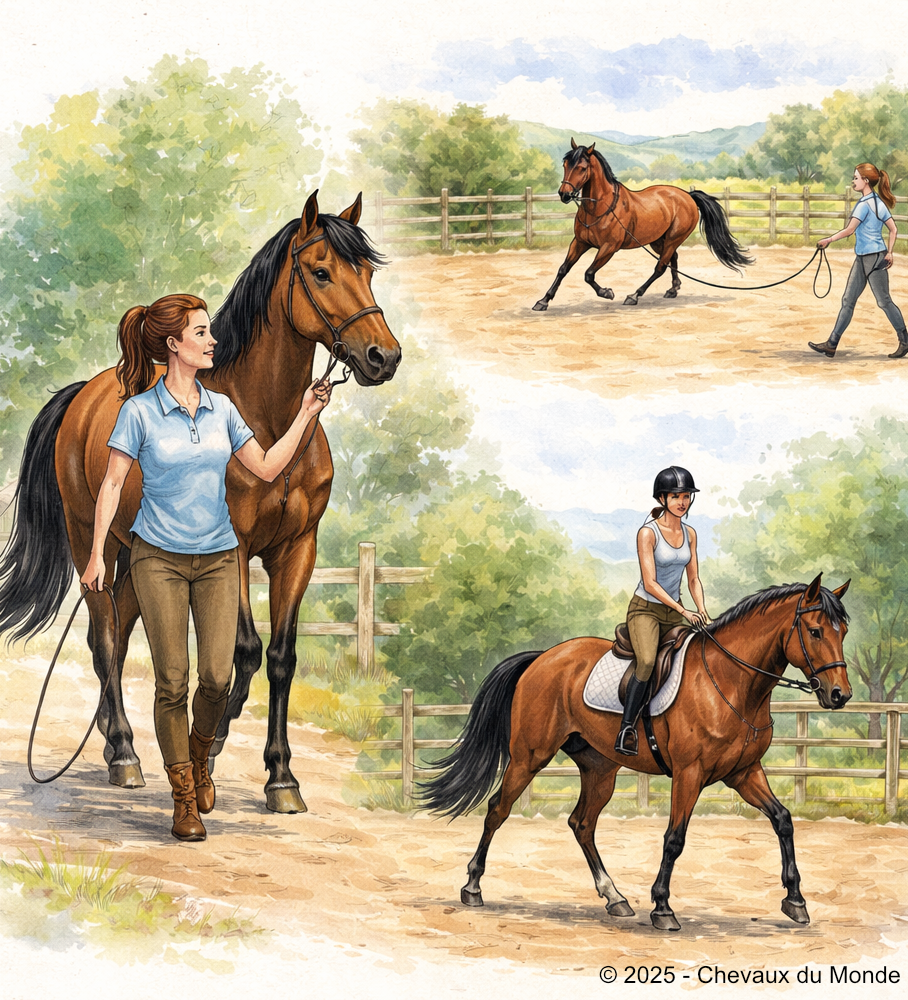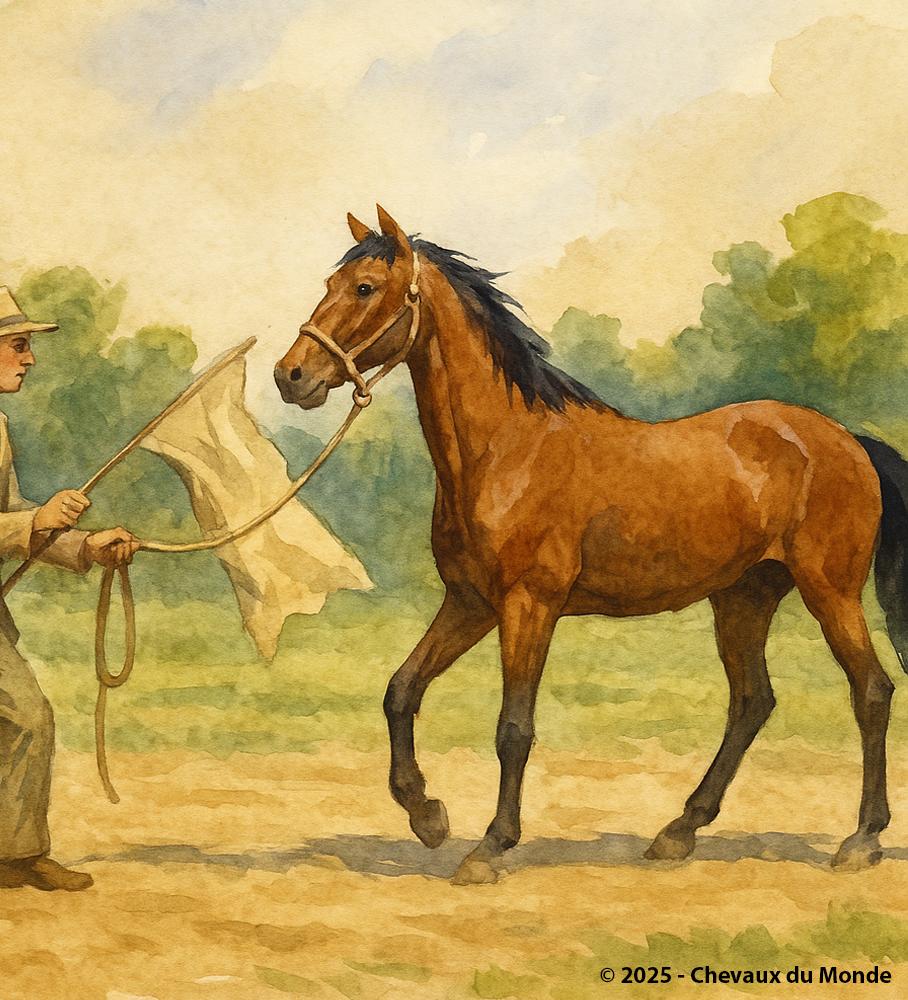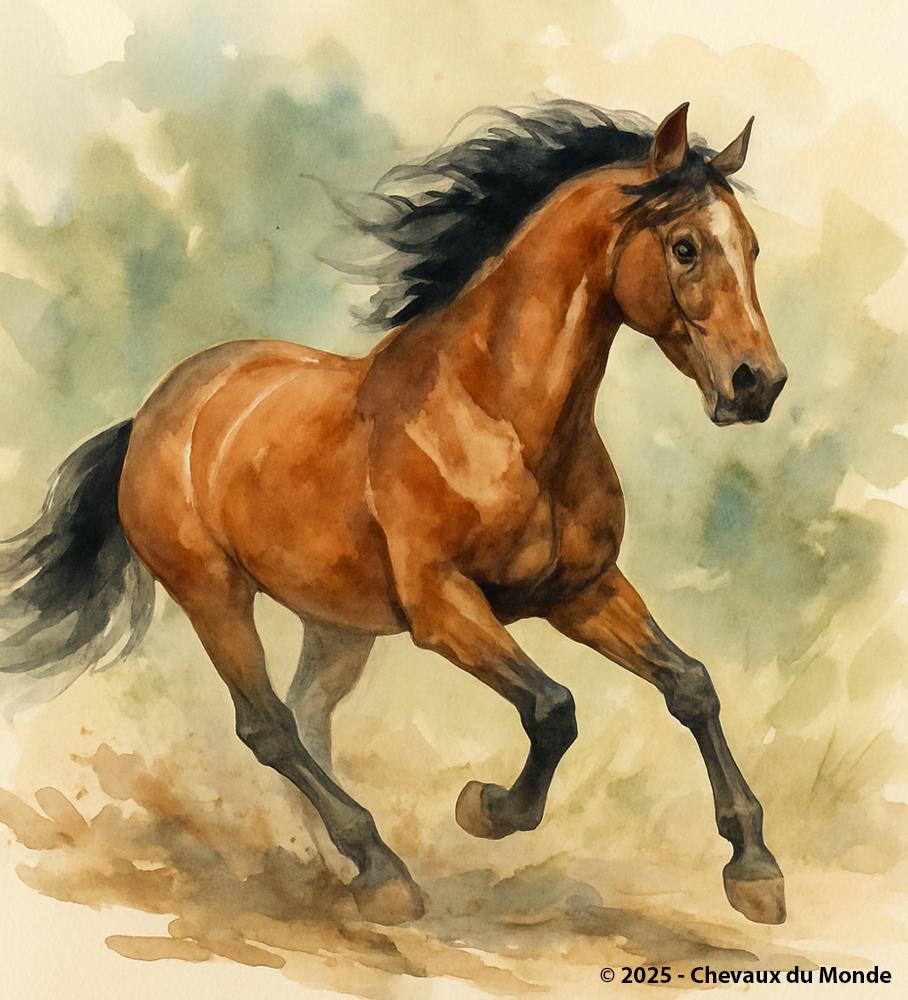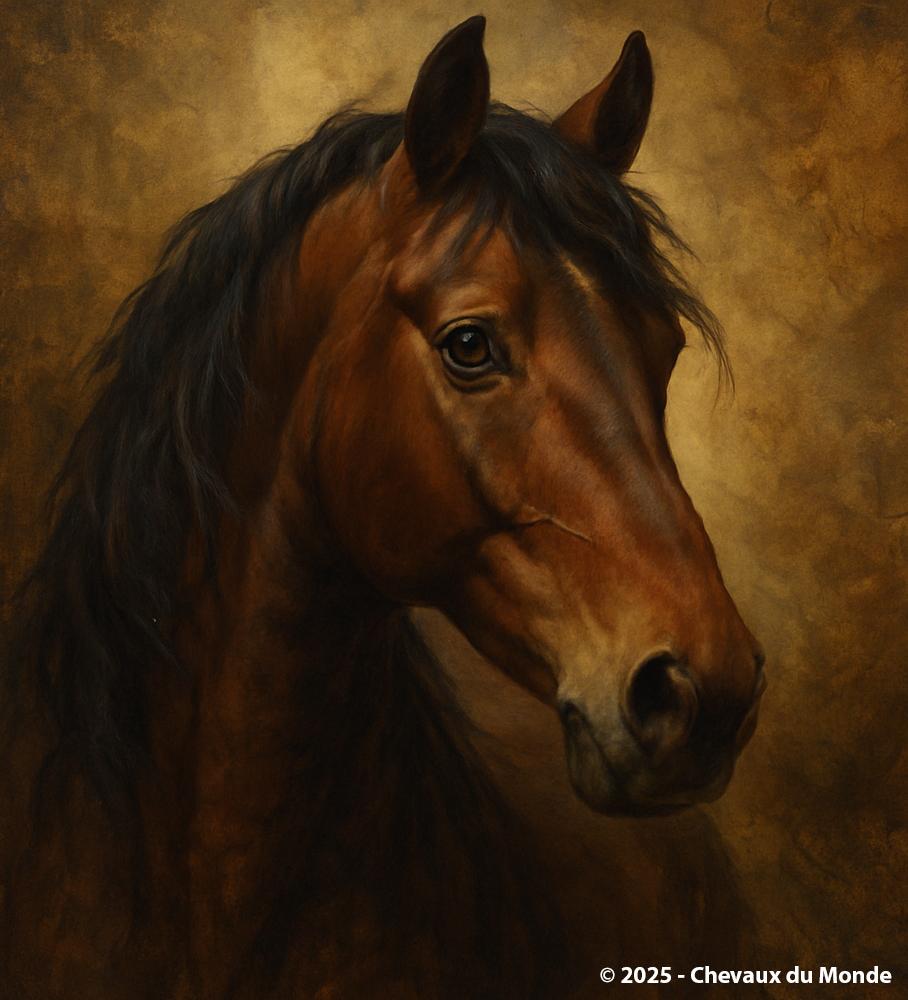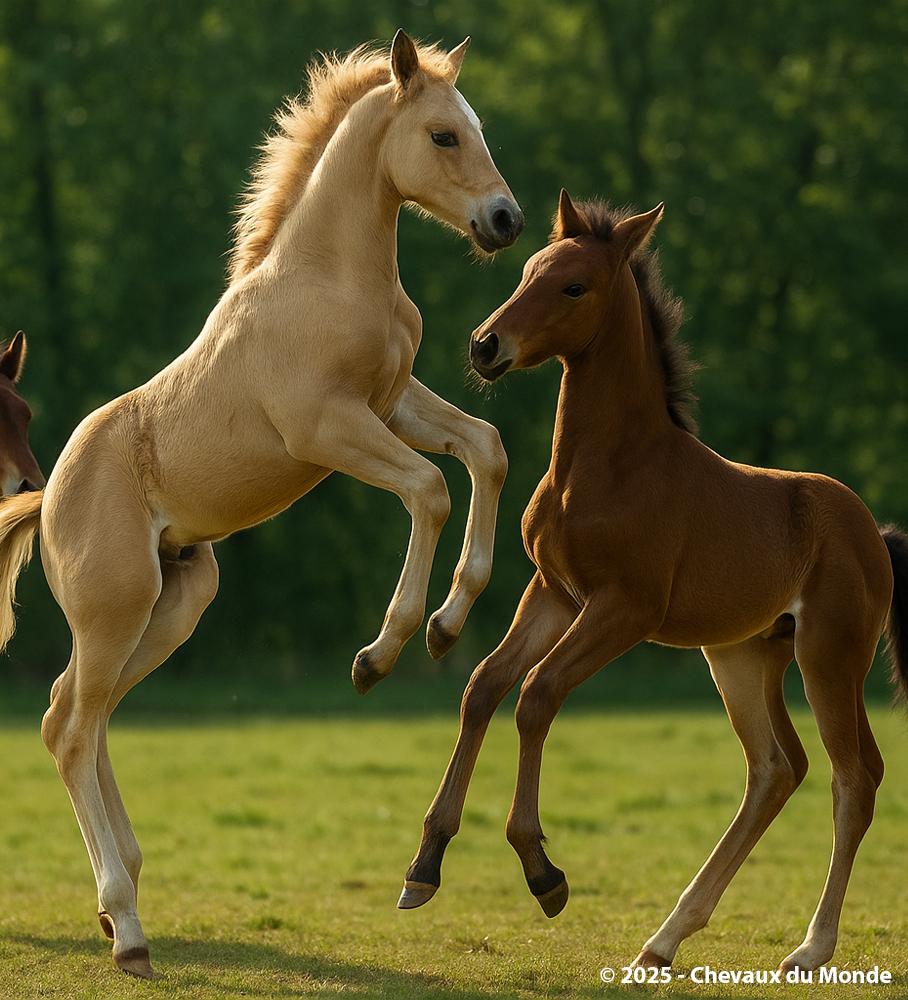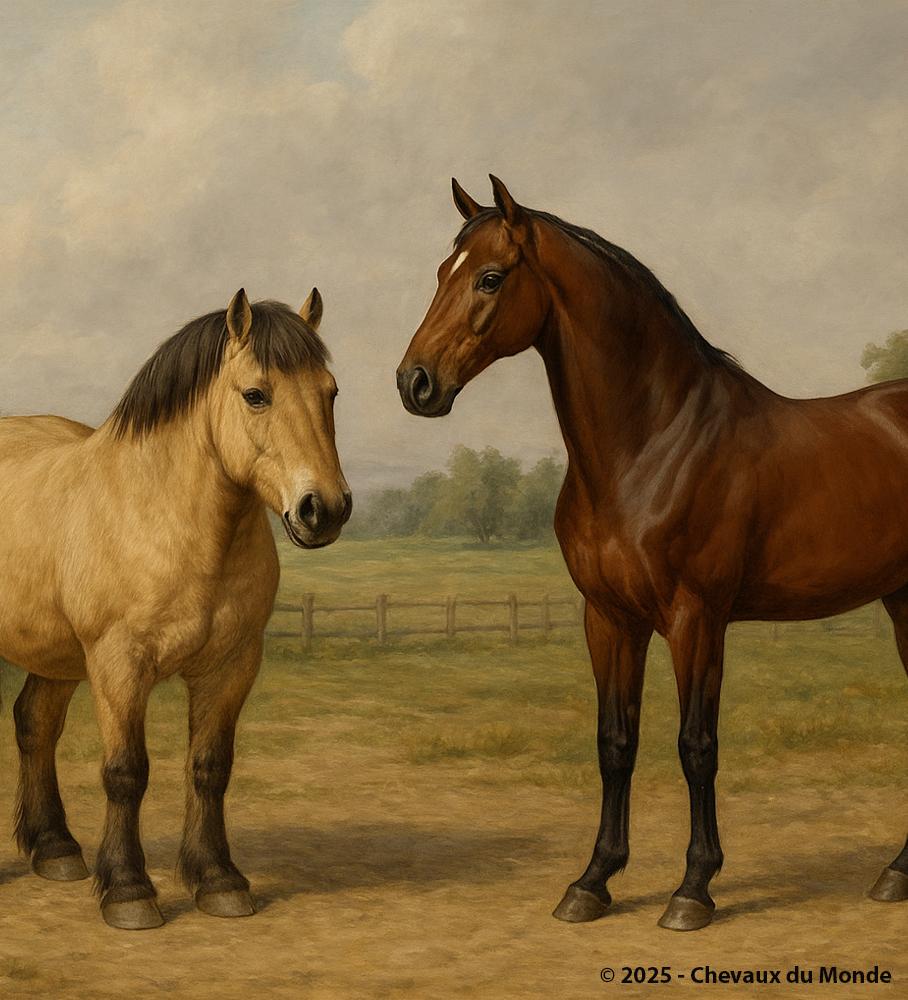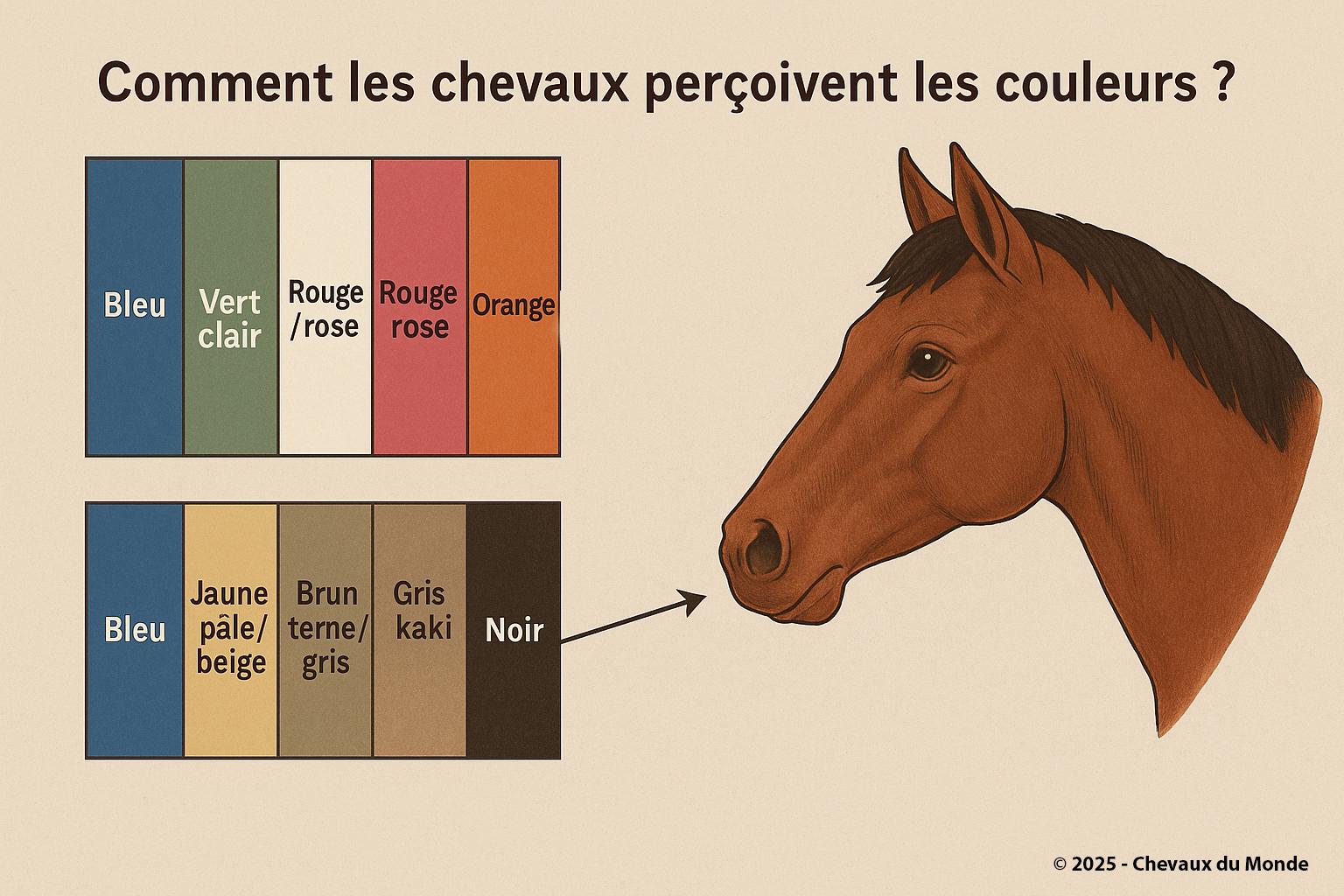THE FEEDING HIERARCHY IN A GROUP OF HORSES

Feeding time reveals hierarchy: in horse groups, access to food follows a strict social order based on rank.
Among horses, access to food is not only a matter of survival but also a social issue. In the wild as well as in domestic settings, equids naturally organize a feeding hierarchy, meaning a priority order in accessing resources (grass, hay, water, minerals). Understanding this mechanism is essential to ensure the well-being of horses and to prevent conflicts in managed herds.
A behavioral heritage
Gregarious instinct and survival
The horse is a gregarious animal, naturally living in structured herds. This organization includes a clear hierarchy that regulates access to resources, reduces conflicts, and ensures group cohesion. In the wild, dominant horses select the best grazing areas or gain first access to watering points.
Influence of domestication
Even under domestic conditions, when fed with hay or concentrates, horses reproduce these inherited behaviors. This is expressed through threatening attitudes (pinned ears, head movements, kicks) but also through concessions by subordinate individuals, who prefer to yield in order to avoid injuries.
Criteria of hierarchy
The position within the feeding hierarchy depends on several factors:
- Age: older horses often dominate the younger ones, thanks to their experience and confidence.
- Sex: dominant mares frequently play a central role in organizing the group, though some geldings or stallions may also impose authority.
- Temperament: self-confidence and the ability to intimidate sometimes matter more than size or strength.
- Seniority: a horse already established in a group generally retains its rank when newcomers arrive.
Manifestations of hierarchy
Signs of dominance
Dominant horses:
- push others away from feeders or buckets,
- control movements around resources,
- use body language to assert their priority.
Behaviors of subordinates
Subordinate horses:
- move aside voluntarily to avoid conflict,
- wait their turn,
- may develop strategies of access, such as taking advantage of a dominant’s moment of inattention.
Practical impacts in breeding and management
Risks linked to competition
In confined spaces, food competition may lead to:
- injuries from kicks or bites,
- chronic stress for subordinate horses,
- undernourishment if some individuals cannot access enough resources.
Good practices to limit tensions
To maintain group balance, it is recommended to:
- multiply feeding points (several hayracks or piles of hay spread out),
- provide several water buckets,
- distribute hay in a long line rather than in concentrated piles,
- regularly monitor the body condition of each horse to identify subordinates losing weight.
A hierarchy beneficial nonetheless
It is important to emphasize that hierarchy is not only a source of conflict. When properly regulated, it ensures:
- social stability,
- fewer unnecessary fights,
- an educational role for young horses, who learn social codes.
Conclusion
The feeding hierarchy among horses is a natural and essential mechanism of group life. It regulates access to resources but may become problematic in domestic settings if feeding conditions are inadequate. By understanding and respecting this organization, the breeder or owner contributes to the well-being of every individual.
"Observing the feeding hierarchy means better understanding the social language of horses and creating a harmonious environment where each one finds its place."


